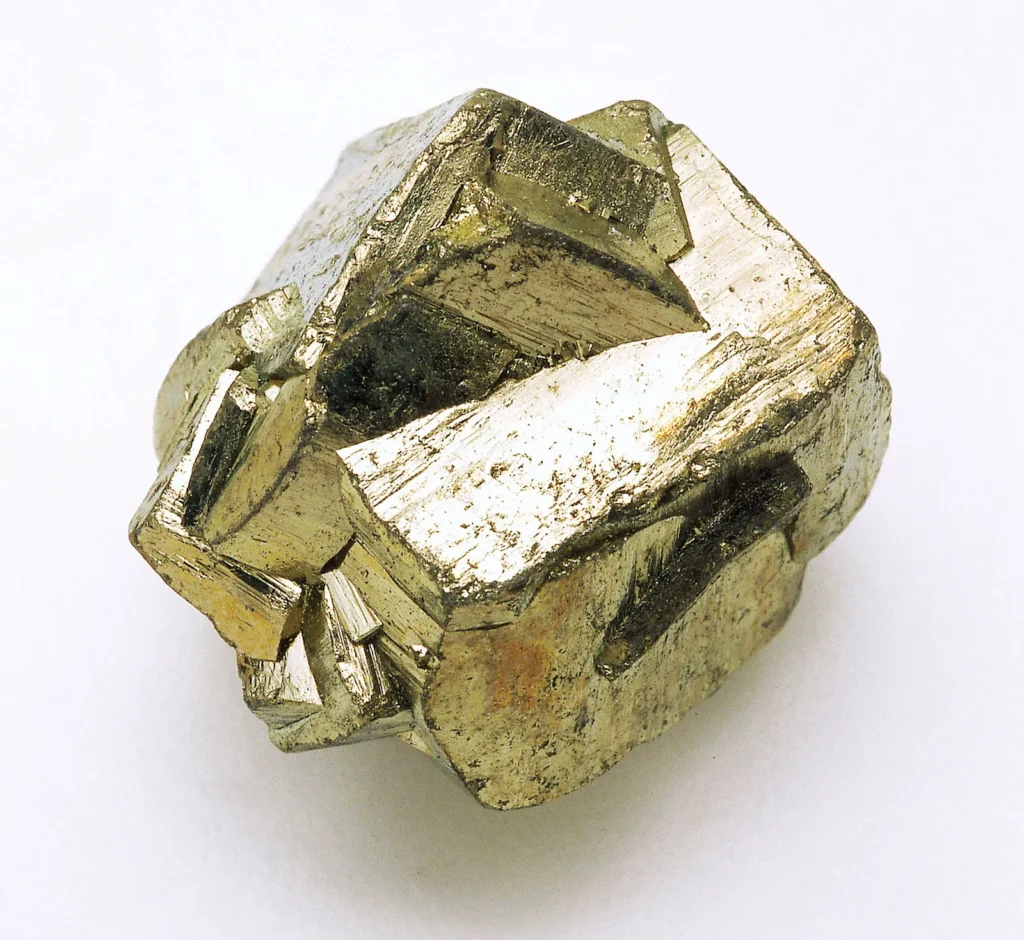
Appearance
When fresh, it is opaque and a light silvery yellow color; when exposed to air, it darkens and tarnishes. Pyrite crystals are frequently striated and can be cubic, octahedral, or twelve-sided “pyritohedron.” Pyrite can also take the form of nodules of radiating, elongate crystals or flattened discs. It can also be large or granular.
Geographical Distribution
It can be found as an accessory mineral in vein deposits including quartz and sulfide minerals, in igneous rocks, and in sedimentary rocks like limestone, shale, and coal. Large amounts of pyrite can be found in contact with metamorphic rocks. Pyrite deposits that contain copper are common and frequently quite large.
Spain was the world’s top producer for a long while, with significant copper reserves found along the Tinto River. The two biggest producers in the world today are China and Italy, followed by Peru and Russia.
History
The most prevalent sulfide mineral is pyrite. The name was given to a variety of stones that, when struck on steel, would emit sparks during the Roman era. One of them was described as brassy by Pliny the Elder, who was most likely alluding to what is today known as pyrite.
Metaphysical Properties
Pyrite enhances the mind and willpower by stimulating the second and third chakras. Pyrite is sometimes thought to be fortunate, drawing wealth and prosperity.

Chemical Composition
Pyrite is made up of two sulfur atoms for every one iron atom, or an iron-to-sulfur ratio of 1:2. Its chemical formula, FeS2, denotes that two sulfur atoms and an iron atom are bound together to form the compound.
Uses
Pyrite is mostly used for the following purposes:
- Jewelry and Decorative Items: Pyrite is a common material for jewelry and decorative objects because of its metallic luster and brassy-yellow to pale-gold color. Gemstones, beads, cabochons, and other decorative items have all been made with it. Because pyrite resembles gold, it has also been used in jewelry designs as a gold substitute; therefore, the term “fool’s gold.”
- Sulfur Production: One of the main sources of sulfur, which is necessary for the synthesis of many different compounds, including sulfuric acid, fertilizers, and detergents, is pyrite. Burning pyrite can produce sulfur dioxide gas, which can subsequently undergo chemical reactions to produce sulfuric acid.
- Industrial Applications: Pyrite has been used in various industrial applications, such as in the production of iron and steel. Pyrite can be used as a source of iron in the production of iron ore pellets, which are used as raw materials in the manufacturing of steel. Pyrite has also been used as a component in the production of sulfur-containing chemicals, as a catalyst in certain chemical reactions, and as a material for producing sparklers and fireworks due to its ability to create sparks when struck against a hard surface.
- Geological and Mineralogical Studies: In geological and mineralogical research, pyrite is frequently employed as an indicator mineral since it is a prevalent mineral in many geological formations. Its properties and existence can reveal important details regarding the hydrothermal activity, mineralization processes, and geological history of a certain location.
Table





